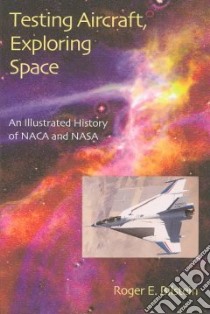Testing Aircraft, Exploring Space - 9780801871580
Un libro in lingua di Bilstein Roger E. edito da Johns Hopkins Univ Pr, 2003
- € 45.40
- Il prezzo è variabile in funzione del cambio della valuta d’origine
The National Advisory Committee for Aeronautics—forerunner of today's NASA—emerged in 1915, when airplanes were curiosities made of wood and canvas and held together with yards of baling wire. At the time an unusual example of government intrusion (and foresight, given the importance of aviation to national military concerns), the committee oversaw the development of wind tunnels, metal fabrication, propeller design, and powerful new high-speed aircraft during the 1920s and '30s. In this richly illustrated account, acclaimed historian of aviation Roger E. Bilstein combines the story of NACA and NASA to provide a fresh look at the agencies, the problems they faced, and the hard work as well as inventive genius of the men and women who found the solutions.
NACA research during World War II led to critical advances in U.S. fighter and bomber design and, Bilstein explains, contributed to engineering standards for helicopters. After 1945 the agency's test pilots experimented with jet-powered aircraft, testing both human and technical limits in trying to break the so-called "sound barrier." In October 1958, when the launch of the Soviet Sputnik signaled the beginning of the space race, NACA formed the nucleus of the new National Aeronautics and Space Agency. The new agency's efforts to meet President Kennedy's challenge—safely landing a man on the Moon and returning him to Earth before the end of the 1960s—is one of the great adventure stories of all time. Bilstein goes on to describe NASA's recent planetary and extraplanetary exploration, as well as its less well-known research into the future of aeronautical design.
Informazioni bibliografiche
- Titolo del Libro in lingua: Testing Aircraft, Exploring Space
- Sottotitolo: An Illustrated History of Naca and Nasa
- Lingua: English
- Autore: Bilstein Roger E.
- Editore: Johns Hopkins Univ Pr
- Collana: Johns Hopkins Univ Pr (Hardcover)
- Data di Pubblicazione: 09 Aprile '03
- Genere: TECHNOLOGY and ENGINEERING
- Argomenti : Airplanes United States Flight testing History Astronautics United States History
- Pagine: 218
- Dimensioni mm: 247 x 165 x 19
- EAN-13: 9780801871580


